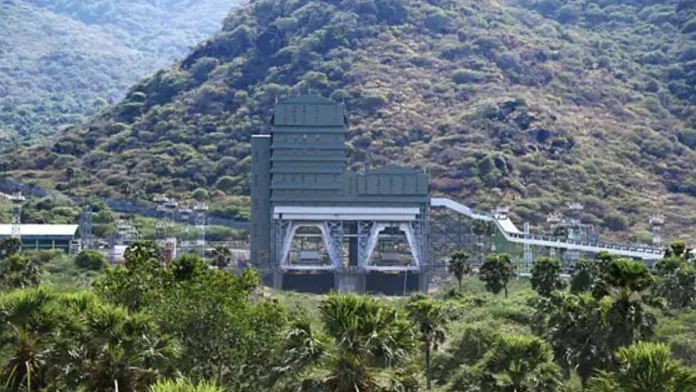On Tuesday, Prime Minister Narendra Modi announced three new space projects with a combined cost of Rs 1,800 crore. The projects were announced at Kerala’s Vikram Sarabhai Space Centre, where the names of India’s first four astronaut candidates were also declared. One of the projects announced is a Semi-Cryogenic Integrated Engine and Stage Test Facility in Mahendragiri, Tamil Nadu. ThePrint explains what the facility will do, in the final part of a three-part series.
Bengaluru: One of the Indian Space Research Organisation’s (ISRO’s) major centres, the Propulsion Complex in Tamil Nadu’s Mahendragiri, has got a major upgrade with a new engine testing facility. Named the Semi-Cryogenics Integrated Engine and Stage Test Facility, the project was inaugurated Tuesday by Prime Minister Narendra Modi during his visit to Kerala’s Vikram Sarabhai Space Centre.
The new complex is expected to aid in the testing and development of India’s highly efficient cryogenic rocket engines.
ISRO Propulsion Complex (IPRC), formerly Liquid Propulsion Systems Centre, boasts of state-of-the-art facilities for rocket propulsion technology and testing.
It contains facilities for assembly, integration, and testing of (solid or liquid) propellant engines and cryogenic engines. High-altitude testing of thrusters and engines and other subsystems is also done there.
The IPRC further includes facilities for production and supply of cryogenic fuel, and the Semi-Cryogenic Cold Flow Test facility there develops and tests engine subsystems.
ISRO uses cryogenic engines often in its last stage of launch vehicles to move through outer space, towards designated orbits. Cryogenic engines carry fuel and oxidiser, to help burn the fuel. This cryogenic fuel as well as the oxidiser are gases that have been super cooled and liquified.
Cryogenic engines are highly efficient and ISRO has been working on perfecting its engines since 1994 when the Cryogenic Upper Stage Project began, which was developed to replace the Russian cryogenic engine that India used to procure.
ISRO’s cryogenic engine development programme is expected to help fly the first Indian citizens to space next year.
Also Read: Making of 4 astronauts for Gaganyaan — rigorous training, medical & fitness tests, survival tasks
Cryogenic milestones
India currently has two functional cryogenic engines, the CE-7.5 and the CE-20.
The 7.5 was the first model to replace the KVD-1 Russian engines that were in use on the GSLV Mk-I rocket. In 2010, the first flight attempt was made with a GSLV Mk-II mission, but the engine did not burn long enough, resulting in mission failure. It flew successfully for the first time in 2014 as a booster for the upper stage of a GSLV Mk-II. It can carry 12,800 kg worth of LOX/LH2 or liquid oxygen-liquid hydrogen fuel.
Last month, ISRO successfully completed the testing of the domestically built CE-20 cryogenic engine, making it human certified and ready to fly on the Gaganyaan mission.
Cryogenic rocket engines have been in use since the early days of the space programme. Even the Apollo missions which took humans to the moon flew on a Saturn V rocket that used cryogenic engines. They are especially advantageous as high performance upper-stage boosters.
India, China, Japan, Russia, US and France are the only countries to have functional cryogenic engines. Except India, the other nations also have functional cryogenic first-stage engines.
Among various fuel combinations, the most widely used and largely efficient is that of liquid hydrogen fuel and liquid oxygen oxidiser, due to their accessibility and low cost.
The new testing facility will test these indigenously developed engines and their crucial subsystems like gas generator and turbo pumps. Tests will include short duration hot firing lasting mere seconds, to long duration burns the engines would actually have to undertake.
(Edited by Nida Fatima Siddiqui)
Also Read: 10K-plus combined flying hours, IAF tested & ISRO selected — Meet 4 crew members of Gaganyaan



